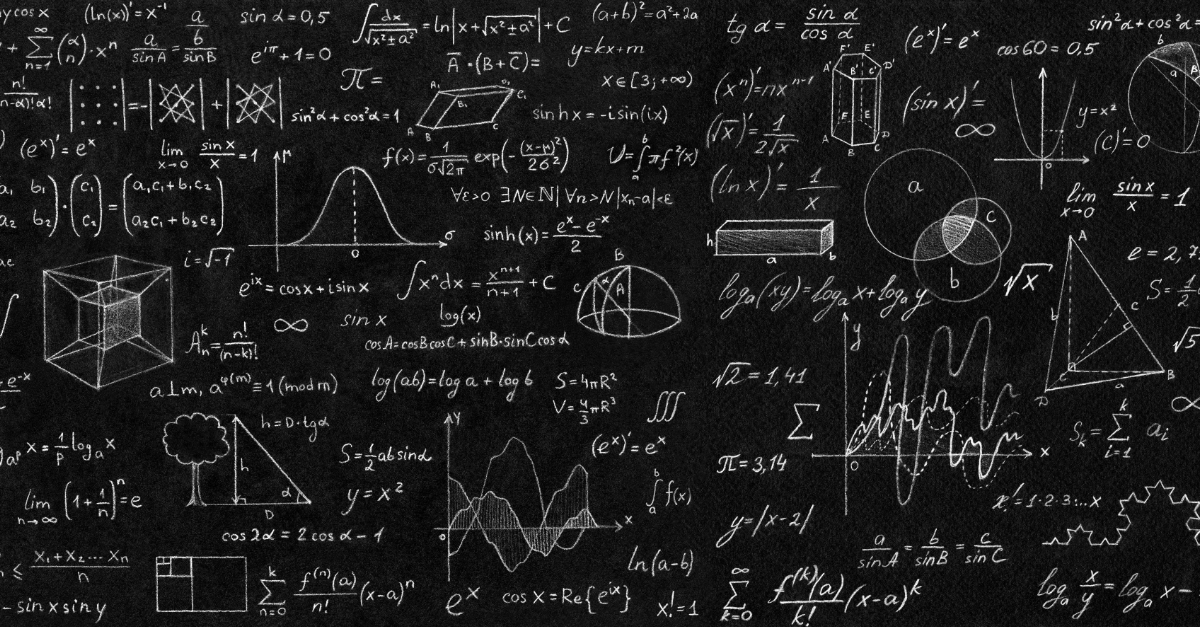Last Updated on June 24, 2022 by Laura Turner
Logarithms are one of the most difficult math topics on the MCAT because many of us haven’t studied them since high school and probably never learned how to calculate logarithms without a calculator.
This is a good news/bad news situation. The bad news is that pH and sound intensity problems from general chemistry and physics will require you to work with logarithms without a calculator. The good news is there’s a trick that makes calculating logarithms easy and will amaze your friends with your mental math skills.
First a quick review of what logarithms are and why they are important on the MCAT: The common logarithm or “log” operator (sometimes seen as “log10 “) is most useful when describing something that is measured on a very large scale.
Mastery of logarithms was essential for scientists and engineers in the 19th and early 20th centuries because they could be used to simplify all kinds of complex calculations. Modern computers have made those skills obsolete, but common logarithms still appear in problems like pH calculations where the underlying scale changes according to powers of 10.
In chemistry, acidity can be measured on a linear scale from [H+] = 0.00000000000001M to [H+] = 1M. However, a 1M difference in [H+] isn’t really meaningful. We see real differences in acidity between substances when the [H+] of one is 100 or 1000 (or more!) times greater than the [H+] of the other.
Calculating PH allows us to measure acidity on a log scale of pH=14 to pH=0. Just as it makes more sense to measure the distance between Tokyo and London in miles rather than inches, it is more useful to describe acidity using pH rather than [H+].
So how exactly does this work? The log function is used to solve equations where the variable is an exponent with base 10. For example, 10X = 100. The log operator allows us to solve for X and write an equivalent expression as log(100) = X. 10X = 100 is the exponential form of the expression, and log(100) = X is the logarithmic form.
It is easiest to determine the logarithm of a power of 10 because the solution is equal to the power of the exponent. Continuing the example above, we can solve the equation by rewriting log(100) as log(102) = 2.
Of course, on the MCAT, you’ll be required to approximate the log of values that are not simple powers of 10. Note the key word here is approximate. One of the most important principles of mastering MCAT math is remembering that you don’t have to calculate the exact answer to every problem, you just need to get close enough to select the correct answer from the list of possible choices.
Recall that pH is the negative log of the [H+]. We can approximate the negative log of a quantity using the formula
–log(m x 10-n) ≈ n – 0.m
where m is a number between 1 and 10 and n is an integer (a whole number).
Some quick examples using the approximation:
–log(3 x 10-5) ≈ 5 – 0.3 = 4.7
–log(7.1 x 10-9) ≈ 9 – 0.71 = 8.29
–log(2.5 x 10-2) ≈ 2 – 0.25 = 1.75
That’s all there is to it!
Let’s end with a couple pH problems:
We hope that these instructions on how to calculate logarithms without a calculator help you crush the MCAT! Make sure to check out the rest of the MCAT Tips and Tricks Series:
- Part I – Converting between units in the metric system
- Part III – Using approximation to tackle complex calculations
- Part IV – Unit conversions in eight easy steps
- Part V – The one about trigonometry
Want to learn more about how to succeed on the MCAT? Check out this webinar from Student Doctor Network and MedSchoolCoach that breaks down key factors for a great score
Text Version of Quiz
Q: What is the pH of a 4.2 x 10-3 M HNO3 solution?
a) 1.61
b) 2.38
c) 3.42
d) 4.20
A: Because HNO3 is a strong acid, [H+] = 4.2 x 10-3 M. The pH of a solution is equal to the negative log of the concentration. In this case, pH = –log(4.2 x 10-3). Using the approximation, we can solve –log(4.2 x 10-3) ≈ 3 – .42 ≈ 2.5, which is closest to answer b).
Q: The Ka of an acid whose buffer has a pH of 3.62 in a solution containing equal M of acid and conjugate base is closest to:
a) 1.02 x 10-7
b) 3.62 x 10-5
c) 2.40 x 10-4
d) 7.23 x 10-2
An important thing to note in this problem is that, when an acid is in a solution containing equal quantities of the acid and conjugate base, the pH is equal to the pKa.
Therefore, we have pH = 3.62 = pKa. However, we are trying to solve for the Ka, not the pKa (recall also that pKa = –log(Ka) ), and we will need to use the approximation we learned before but in reverse.
pH = n – 0.m ≈ –log(m x 10-n)
We can rewrite the pH of 3.62 as 4 – 0.38, putting it in the form n – 0.m shown above. This gives us
pH = 4 – 0.38 ≈ –log(m x 10-n)
Now we can substitute in m and n to approximate Ka on the right hand side.
pH = 4 – 0.38 ≈ –log(3.8 x 10-4)
So the approximate value of the Ka is 3.8 x 10-4 M, which is closest to answer c).

The last example says the answer is c, but 3.8 x 10-4 M is not listed as answer c (or any of the answers). Is this a typo…?